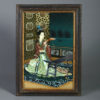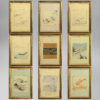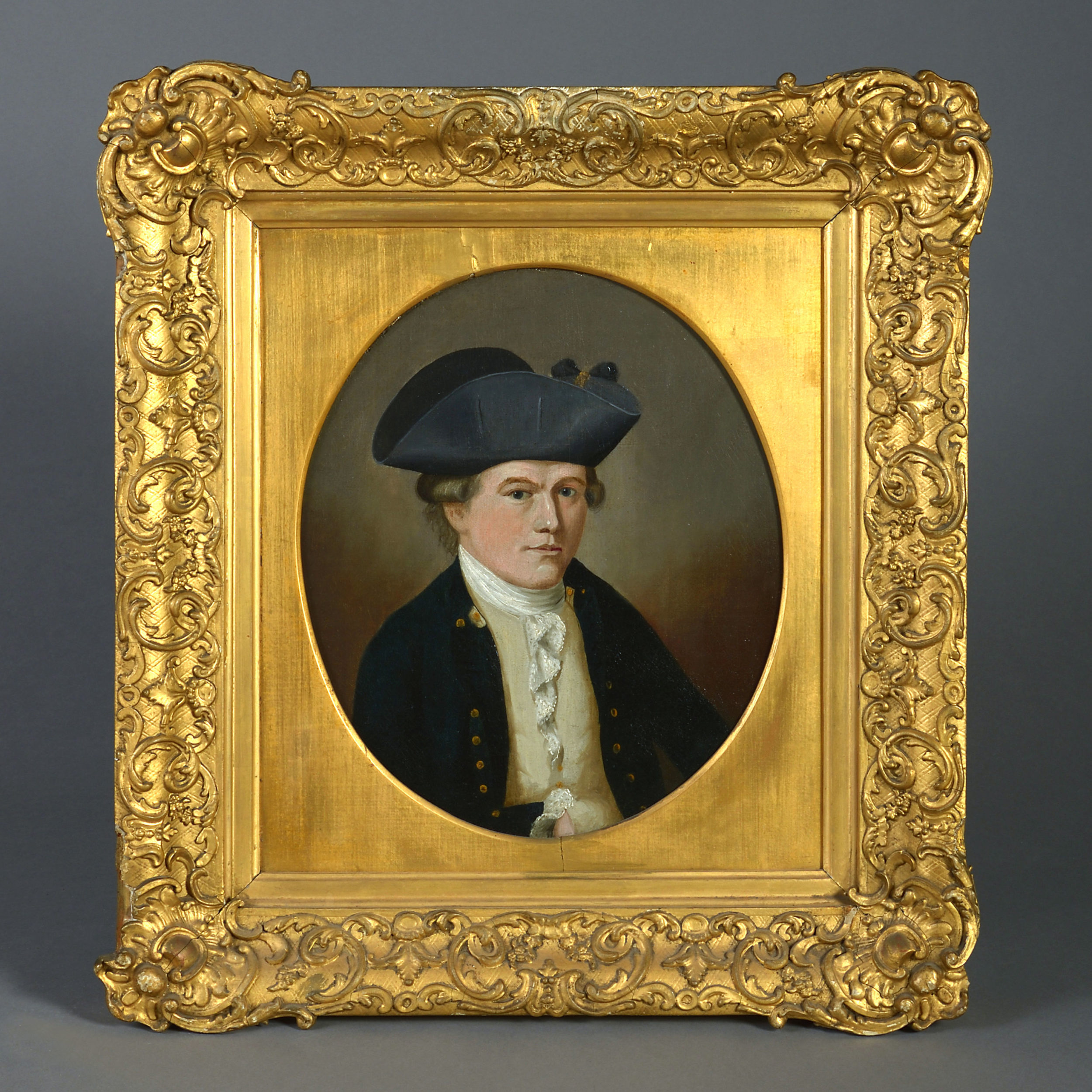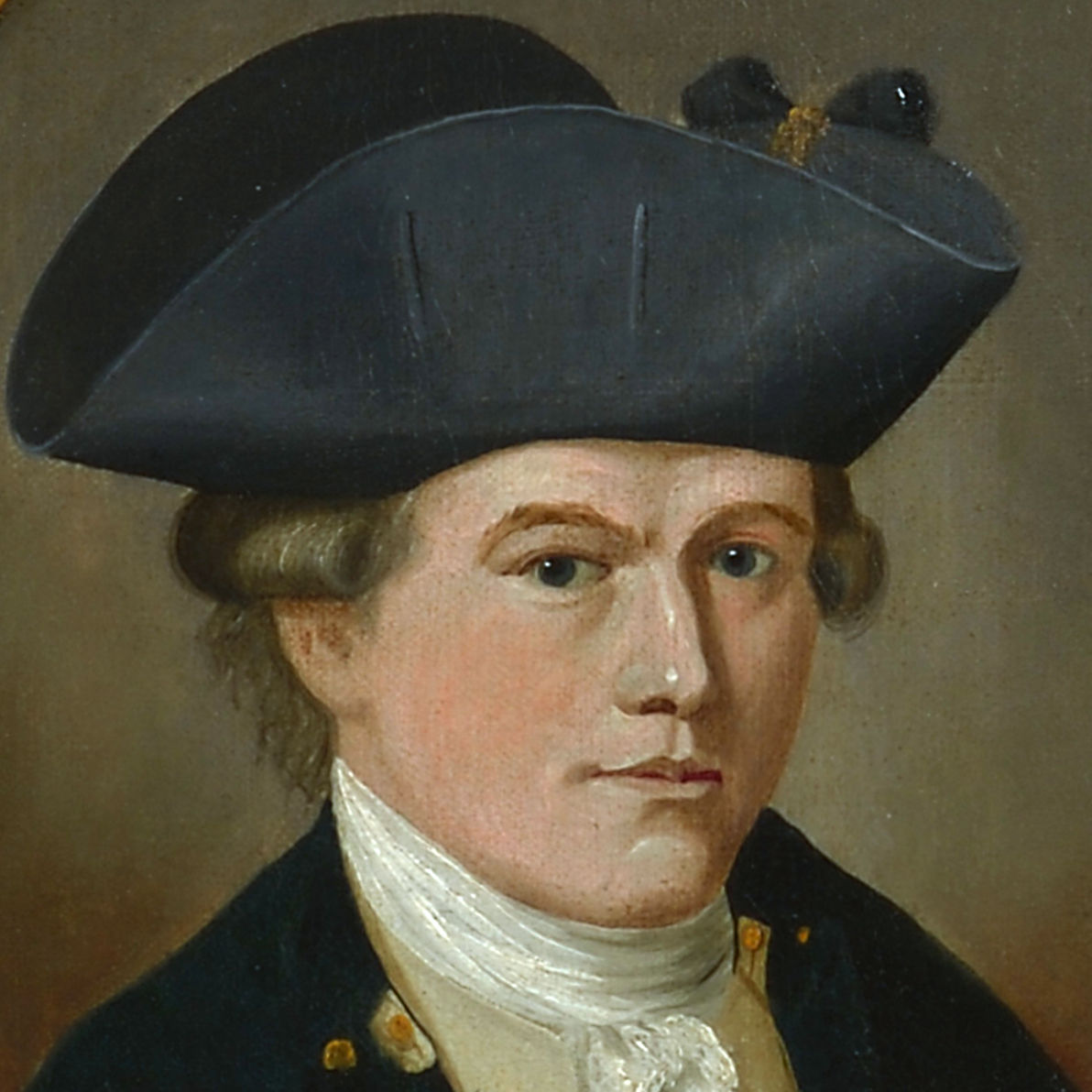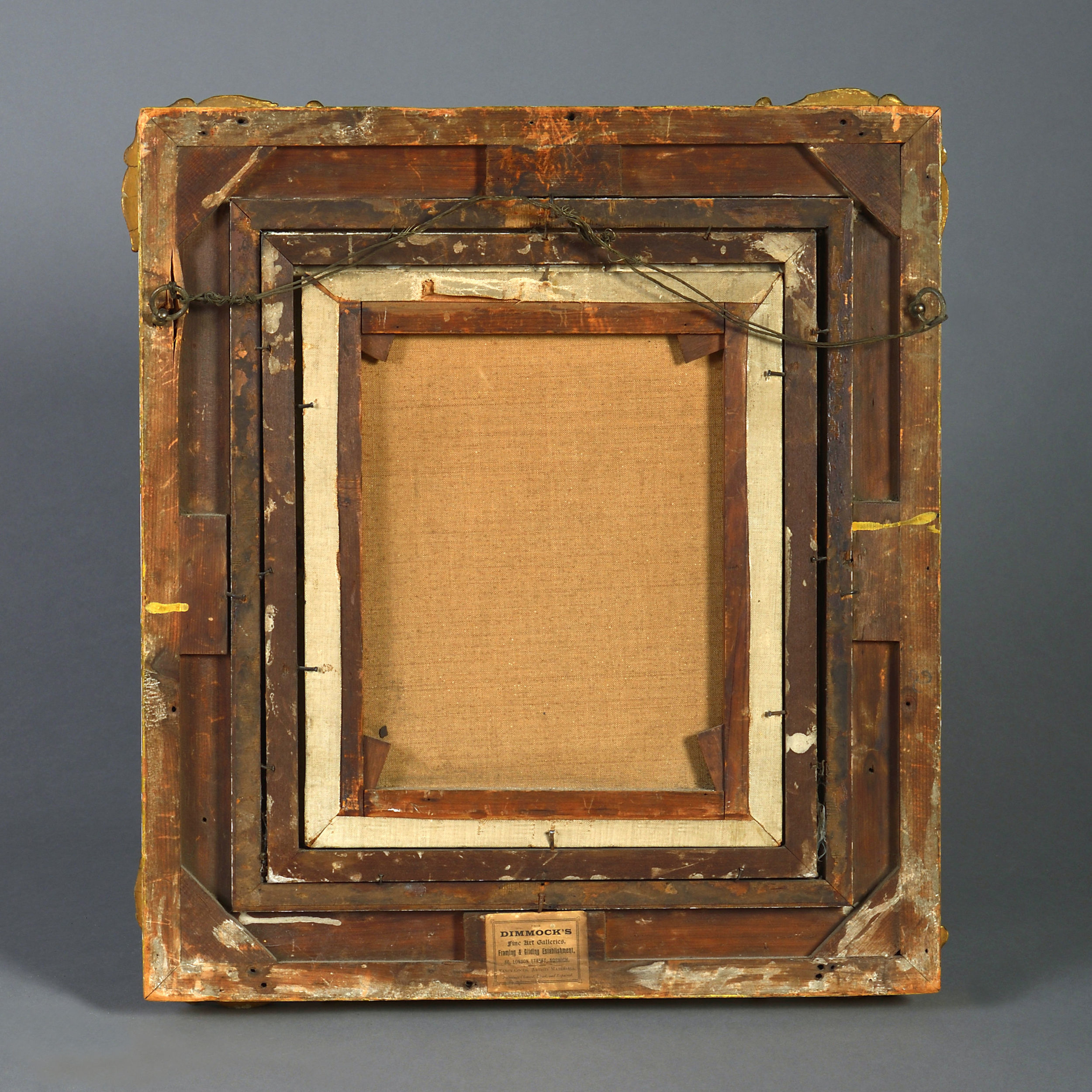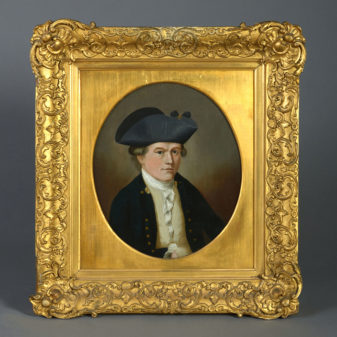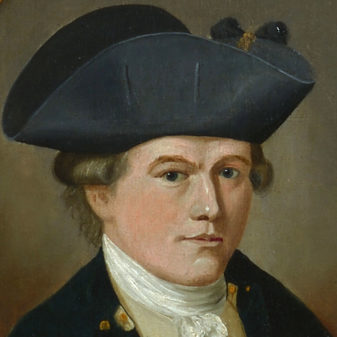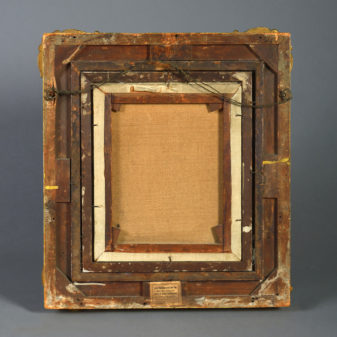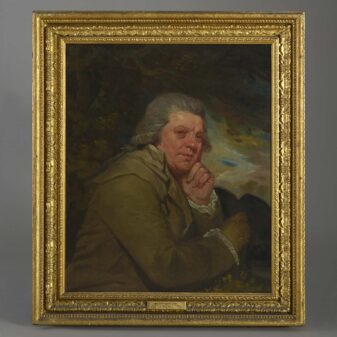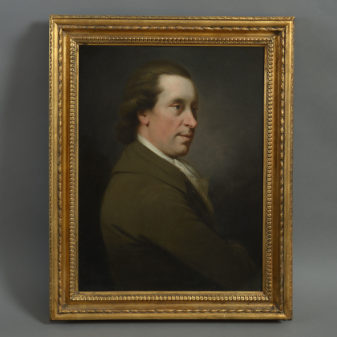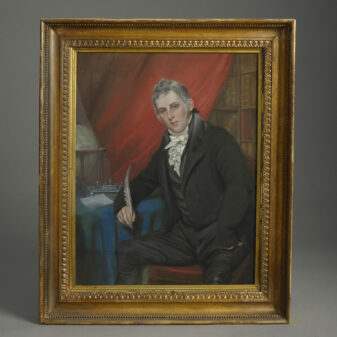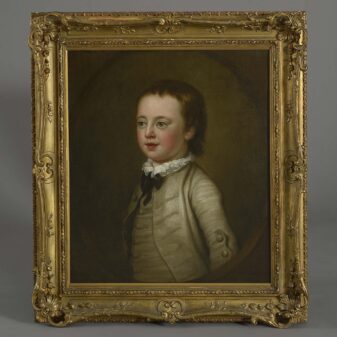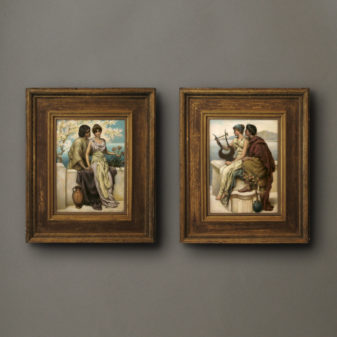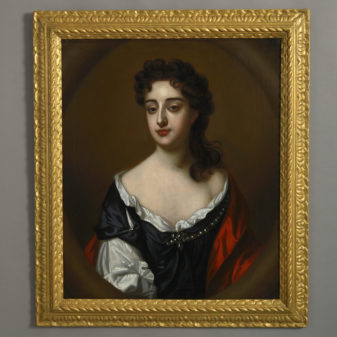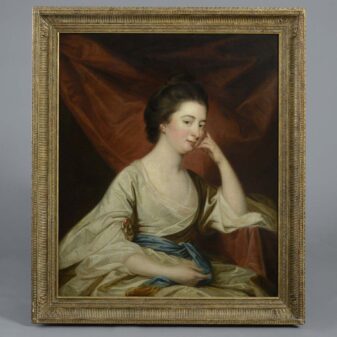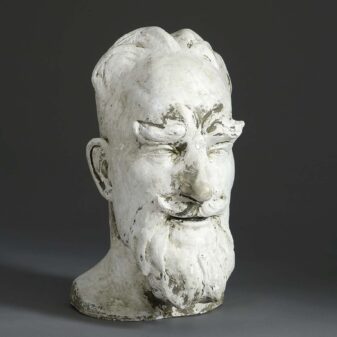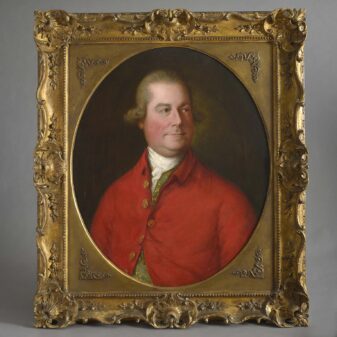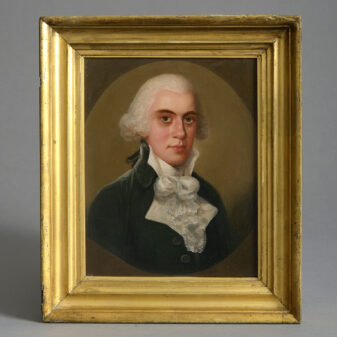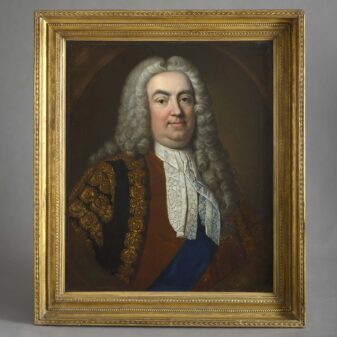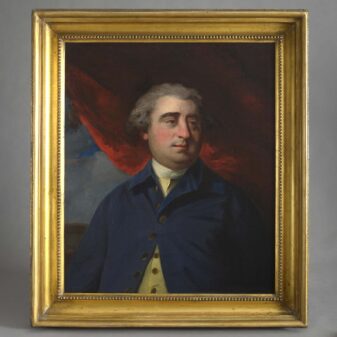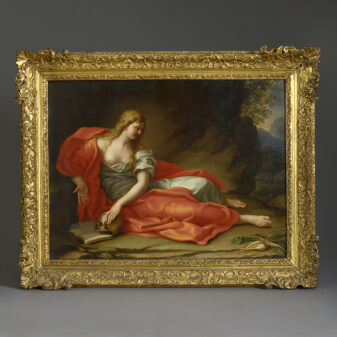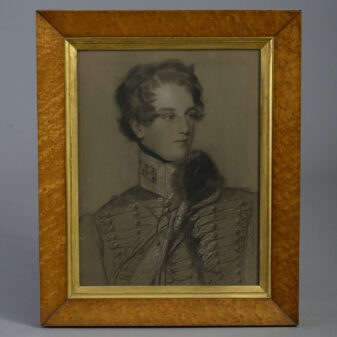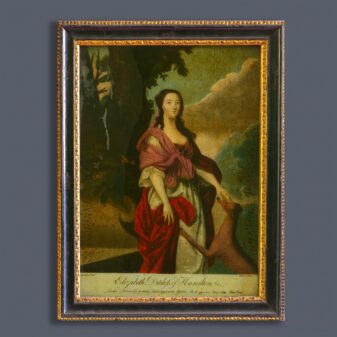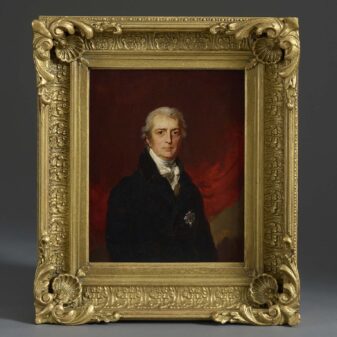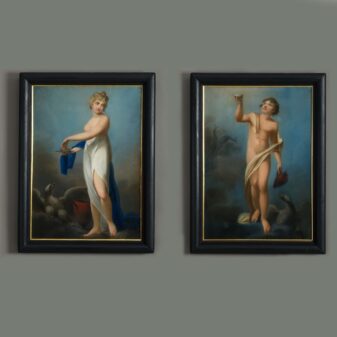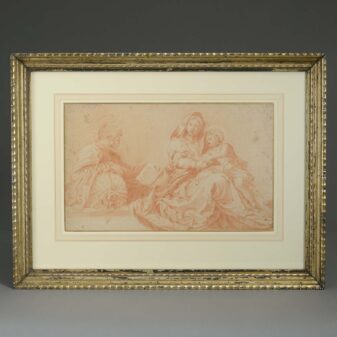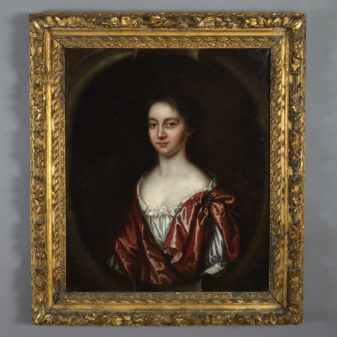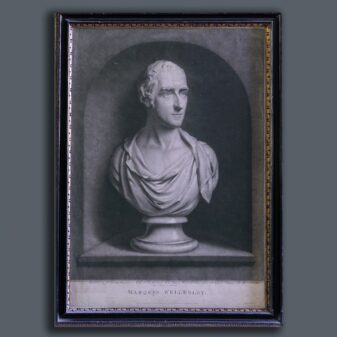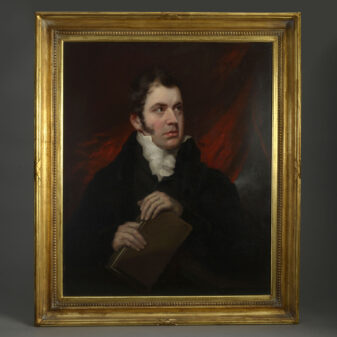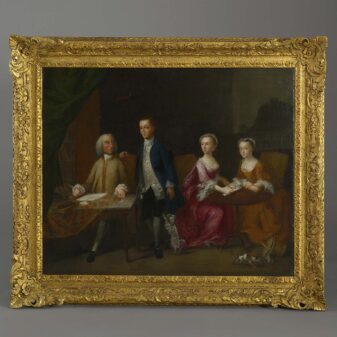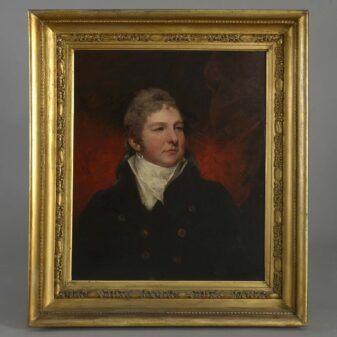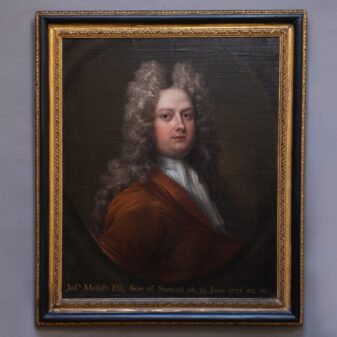18th Century Portrait of a Naval Officer
£2,900
SOLD
English School, 18th century
Portrait of a Naval officer c.1770
Oil on canvas; held in a 19th century period frame
Provenance: A Manor House, Somerset, England.
This fascinating portrait of a young Royal naval officer unusually depicts him wearing his tricorn hat, a good indication of period as after 1775 this was phased out in preference of a bicorn. He is also wearing lace cuffs and his scarf is similar, which by the 1780s was gradually replaced with simpler cotton and silk without too much embellishment.
Prior to the 1740s, Royal Navy officers and sailors had no established uniforms, although many of the officer class typically wore gentleman’s clothing with wigs to denote their social status. The early Royal Navy also had only three clearly established shipboard ranks: Captain, Lieutenant and Master. This simplicity of rank had its origins as far back as the Middle Ages. Uniform regulations for naval officers were first issued by Lord Anson in 1748, and was in response to officers wishing for an established uniform pertaining to their service. Officer uniforms were at first divided into a ‘best uniform’, consisting of an embroidered blue coat with white facings worn unbuttoned with white breeches and stockings, as well as a ‘working rig’ which was a simpler, less embroidered uniform for day-to-day use.
In 1767 the terms ‘dress’ and ‘undress’ uniform had been adopted and by 1795, epaulettes were officially introduced. The epaulette style uniforms and insignia endured with modification until a final version introduced in 1846. In 1856 Royal Navy officer insignia shifted to the use of rank sleeve stripes – a pattern which has endured to the present day.

